The Ser Verb Worksheets
The Ser Verb Worksheets are designed to help Spanish learners of all levels master the conjugation and usage of the verb "ser." Whether you are a beginner seeking to grasp the basics or an intermediate learner aiming to strengthen your skills, these worksheets provide a comprehensive and organized approach to understanding this essential Spanish verb.
Table of Images 👆
- Spanish Ser Worksheet 1 Answer Key
- Spanish Ser and Estar Worksheets
- Spanish Verb Conjugation Worksheets Blank
- Spanish Ser and Estar Worksheets
- Spanish Subject Pronoun and Ser Worksheet
- Spanish AR ER Ir Verbs Worksheet
- Printable Ser Worksheets
- La Familia Spanish Worksheets
- Spanish Ser and Estar Worksheets
- Ser Spanish Verb Conjugation Worksheet
- Phrase Verb Printable Worksheets
More Other Worksheets
Kindergarten Worksheet My RoomSpanish Verb Worksheets
Healthy Eating Plate Printable Worksheet
Cooking Vocabulary Worksheet
My Shadow Worksheet
Large Printable Blank Pyramid Worksheet
Relationship Circles Worksheet
DNA Code Worksheet
Meiosis Worksheet Answer Key
Rosa Parks Worksheet Grade 1
What is a ser verb?
A ser verb in Spanish is a verb used to express identity, characteristics, origin, and possession. It is one of the most important and commonly used verbs in the language, conjugated as "soy," "eres," "es," "somos," "sois," and "son" in the present tense.
What are the different conjugations of the verb ser?
The different conjugations of the verb ser in Spanish are: yo soy, tú eres, él/ella/usted es, nosotros/nosotras somos, vosotros/vosotras sois, and ellos/ellas/ustedes son.
How is the verb ser used in the present tense?
The verb "ser" is used in the present tense to describe permanent or essential qualities, such as identity, characteristics, origins, and relationships. It is also used to indicate the time, date, or location of an event. For example, "Yo soy estudiante" (I am a student) or "Ella es de México" (She is from Mexico).
How is the verb ser used in the past tense?
In the past tense, the verb "ser" is conjugated as "fui" for the singular first person ("I was"), "fuiste" for the singular second person ("you were"), "fue" for the singular third person ("he/she/it was"), "fuimos" for the plural first person ("we were"), "fuisteis" for the plural second person ("you all were"), and "fueron" for the plural third person ("they were").
How is the verb ser used in the future tense?
The verb "ser" in the future tense is conjugated as follows: yo seré (I will be), tú serás (you will be), él/ella/usted será (he/she/you will be), nosotros/nosotras seremos (we will be), vosotros/vosotras seréis (you all will be), and ellos/ellas/ustedes serán (they/you all will be). This tense is used to talk about actions or states that will occur in the future.
How does the verb ser change in the different subject pronouns?
The verb "ser" is conjugated differently depending on the subject pronoun. In the present tense, the conjugation of "ser" is as follows: yo soy (I am), tú eres (you are), él/ella/usted es (he/she/you formal are), nosotros/nosotras somos (we are), vosotros/vosotras sois (you all are), and ellos/ellas/ustedes son (they/you all are). Each subject pronoun corresponds to a specific conjugation of the verb "ser.
Can you give examples of ser verb sentences using different subject pronouns?
Sure, here are some examples of ser verb sentences using different subject pronouns: "Yo soy feliz" (I am happy), "Tú eres inteligente" (You are intelligent), "Él es alto" (He is tall), "Ella es simpática" (She is nice), "Nosotros somos estudiantes" (We are students), "Vosotros sois graciosos" (You all are funny), "Ellos son amables" (They are kind).
What are some common phrases or expressions that use the verb ser?
Some common phrases or expressions that use the verb "ser" in Spanish include "ser bueno/a" (to be good), "ser malo/a" (to be bad), "ser inteligente" (to be intelligent), "ser amable" (to be kind), "ser fuerte" (to be strong), "ser alto/a" (to be tall), "ser bajo/a" (to be short), "ser simpático/a" (to be friendly), "ser guapo/a" (to be handsome/beautiful), and "ser gracioso/a" (to be funny).
Are there any irregularities or exceptions to be aware of when conjugating the verb ser?
Yes, the verb "ser" is irregular in the present tense for the pronouns "yo" (I) and "él/ella/usted" (he/she/you formal). The conjugation for "yo" is "soy" and for "él/ella/usted" is "es." Additionally, in the preterite tense, "ser" has irregular conjugations for all subject pronouns: yo fui, tú fuiste, él/ella/usted fue, nosotros/nosotras fuimos, vosotros/vosotras fuisteis, ellos/ellas/ustedes fueron.
Can you provide some practice exercises or worksheets to reinforce the understanding of ser verb conjugations?
I'm unable to provide practice exercises or worksheets directly. However, you can find many resources online that offer ser verb conjugation exercises and worksheets. Websites like Spanish411, StudySpanish, and Conjuguemos offer interactive activities focused on practicing verb conjugations. Additionally, you can create your own exercises by making flashcards, writing sentences using different verb forms, or practicing with a language partner. Consistent practice is key to reinforcing your understanding of ser verb conjugations.
Have something to share?
Who is Worksheeto?
At Worksheeto, we are committed to delivering an extensive and varied portfolio of superior quality worksheets, designed to address the educational demands of students, educators, and parents.

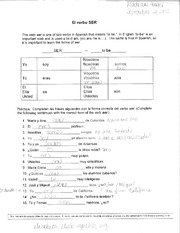



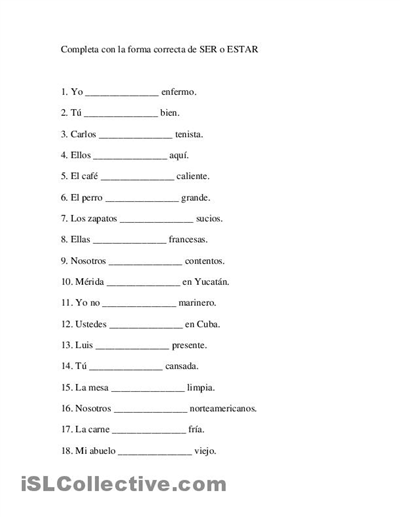
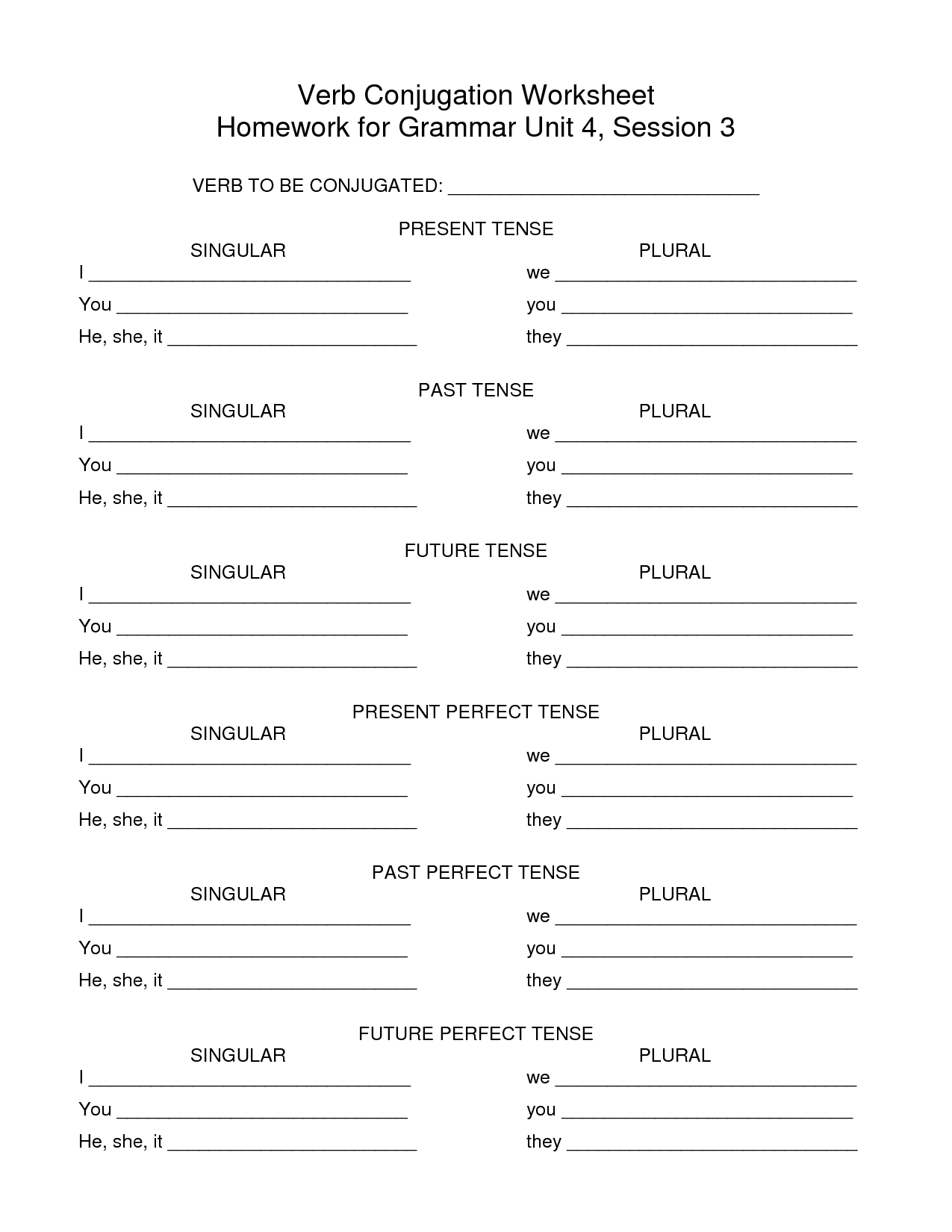
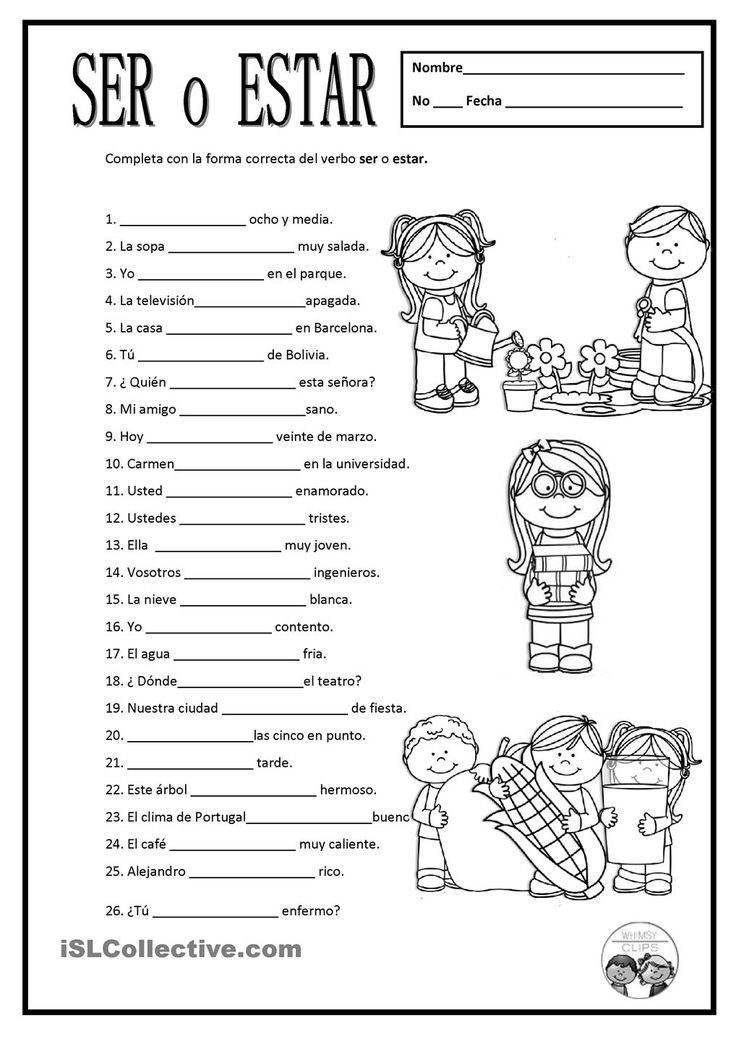

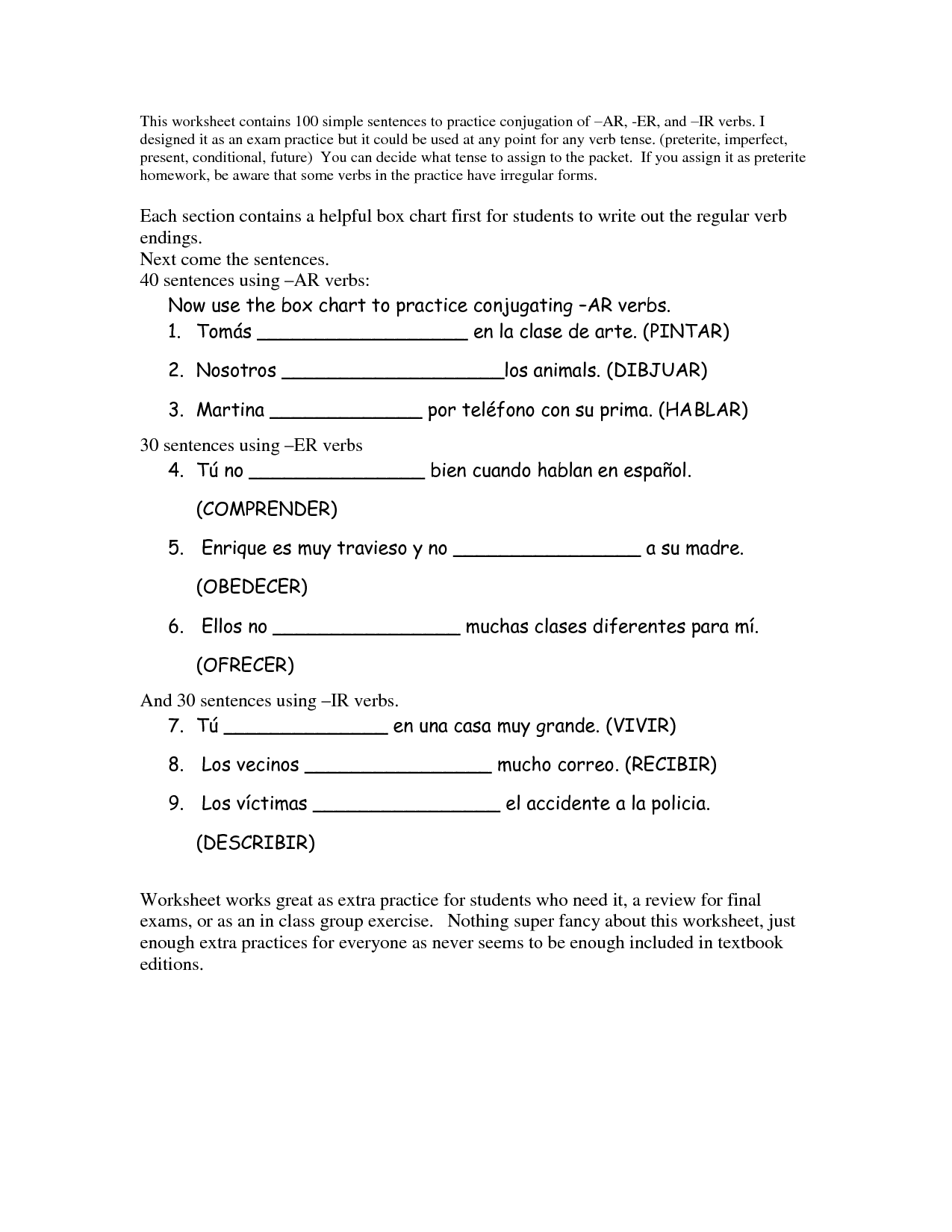
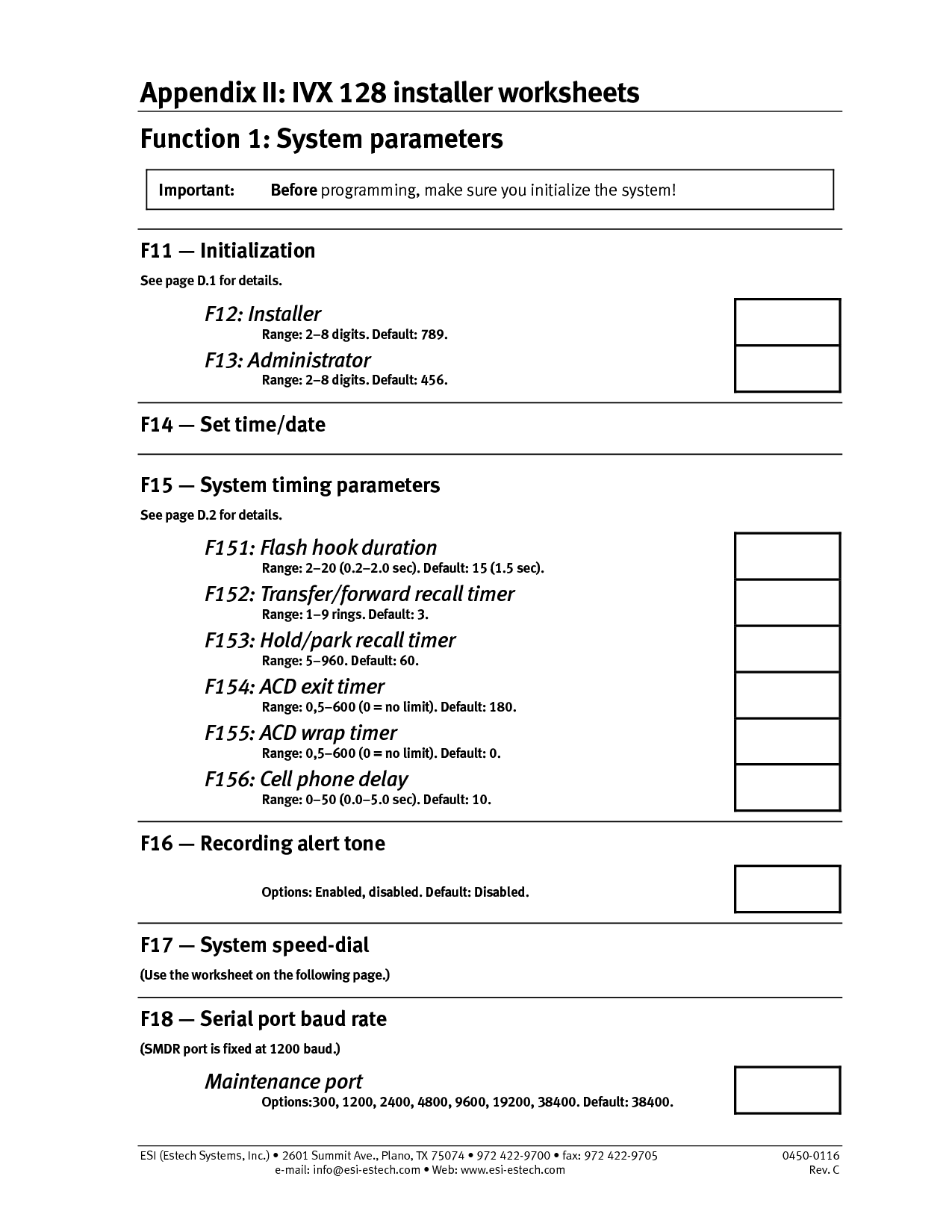
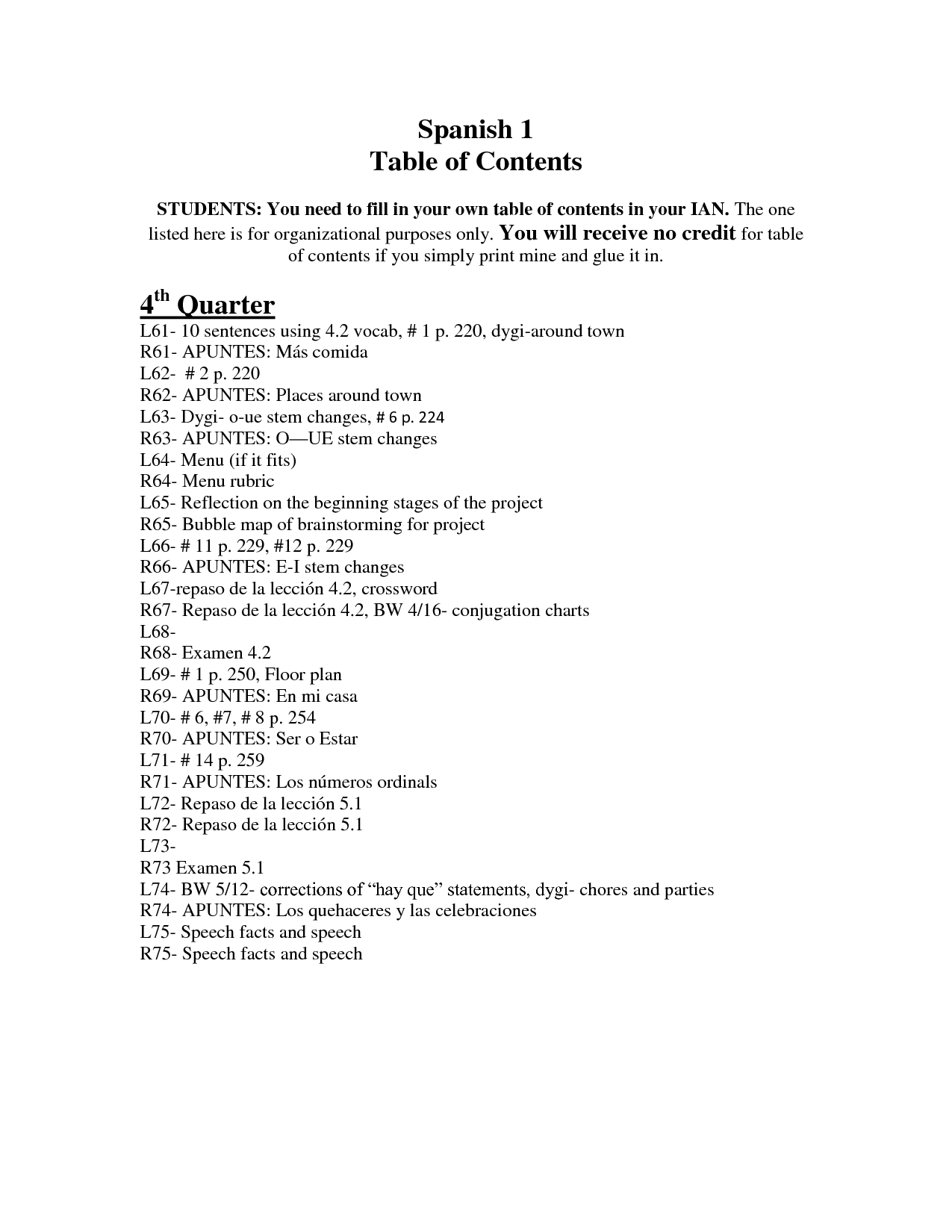

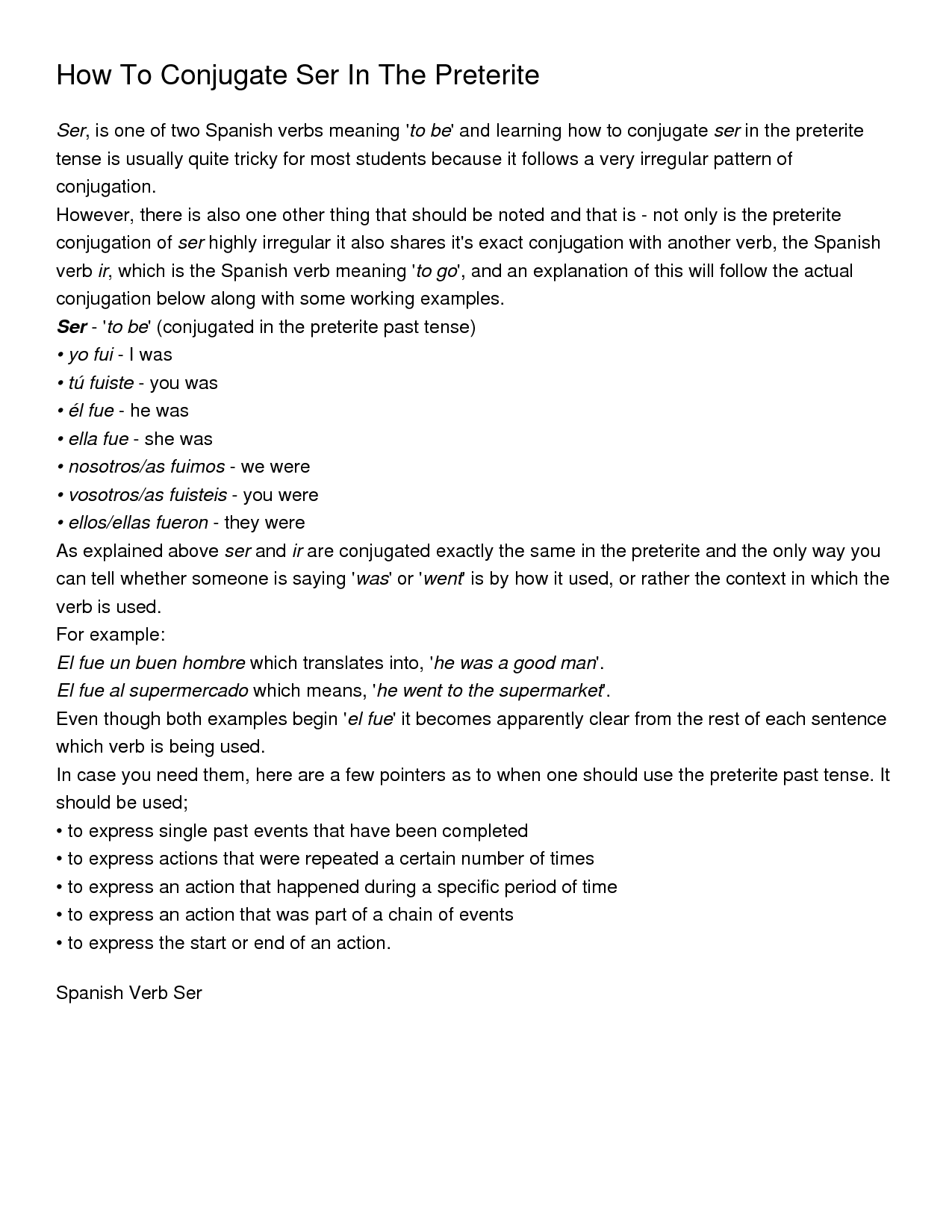















Comments